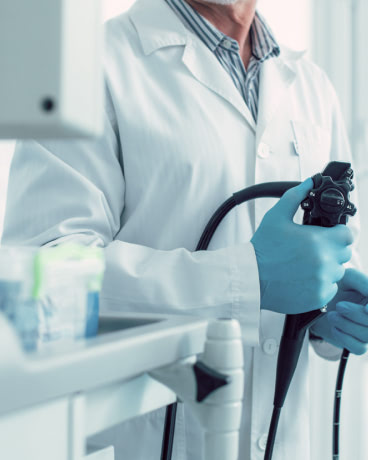What is a Colonoscopy?
A colonoscopy is a medical procedure used to examine the interior of the large intestine (colon) and rectum. It is a vital diagnostic tool for detecting abnormalities such as polyps, tumors, inflammation, and bleeding. It is also used for screening for colorectal cancer. The procedure involves the use of a long, flexible tube called a colonoscope, which has a small camera and light at its tip to provide a clear view of the colon.
The Process of a Colonoscopy
Preparation
Proper preparation is crucial for a successful colonoscopy. The goal is to empty the colon to provide a clear view for the doctor. Preparation typically involves the following steps:
- Dietary Restrictions: A few days before the procedure, patients are usually advised to follow a low-fiber diet. The day before the colonoscopy, a clear liquid diet is recommended. This includes broth, clear juices, gelatin, and water. Patients should avoid red or purple liquids, which can be mistaken for blood during the procedure.
- Bowel Preparation: Patients must take a laxative solution prescribed by their doctor to clean out the colon. This solution induces bowel movements to empty the colon completely. The exact instructions for bowel preparation vary, but it usually involves drinking the solution the evening before and the morning of the procedure.
During the Procedure
The colonoscopy itself typically takes about 30 to 60 minutes and involves the following steps:
- Sedation: To ensure comfort, patients are given sedatives or anesthesia. This can be administered intravenously to make the patient relaxed and drowsy, or it can put them to sleep during the procedure.
- Positioning: The patient lies on their side on an examination table, usually with knees drawn toward the chest.
- Insertion of the Colonoscope: The doctor gently inserts the colonoscope into the rectum and gradually advances it through the colon. The camera on the colonoscope transmits images to a monitor, allowing the doctor to examine the colon’s lining.
- Inflation of the Colon: To get a better view, the colon is inflated with air or carbon dioxide, which can cause some bloating or cramping.
- Examination and Removal: The doctor carefully inspects the entire colon. If any polyps or abnormal tissues are found, they can be removed using tools passed through the colonoscope. Tissue samples (biopsies) may also be taken for further analysis.
After the Procedure
After the colonoscopy, patients are monitored in a recovery area until the effects of the sedative or anesthesia wear off. Full recovery typically takes about an hour. Important post-procedure steps include:
- Discharge Instructions: Patients receive instructions on what to expect and how to care for themselves after the procedure. This includes information on diet, activity, and what to watch for in terms of potential complications.
- Transportation: Because of the sedation, patients are advised not to drive or operate machinery for at least 24 hours. Arrangements for someone to drive them home are necessary.
- Diet and Activity: Patients are usually allowed to eat and drink as usual after the procedure, but they should start with light meals. It is advisable to avoid strenuous activities for the rest of the day.
Benefits of a Colonoscopy
Colonoscopy is considered the gold standard for colon cancer screening and has several benefits:
- Early Detection and Prevention: Polyps detected during a colonoscopy can be removed before they become cancerous, effectively preventing colorectal cancer.
- Accurate Diagnosis: Colonoscopy provides a clear view of the entire colon, allowing for the accurate diagnosis of conditions like inflammatory bowel disease (IBD), diverticulosis, and colorectal cancer.
- Tissue Sampling: Biopsies can be taken during the procedure to investigate any abnormal findings further.
Risks and Complications
While colonoscopy is generally safe, there are potential risks and complications, including:
- Bleeding: There may be bleeding at the site where a polyp was removed, or a biopsy was taken. This is usually minor and stops on its own.
- Perforation: In rare cases, the colonoscope can create a tear in the wall of the colon or rectum, which may require surgical repair.
- Adverse Reaction to Sedation: Some patients may experience side effects or allergic reactions to the sedatives or anesthesia used during the procedure.
- Infection: Although rare, there is a slight risk of infection.
Conclusion
A colonoscopy is a crucial procedure for detecting and preventing colorectal cancer and diagnosing other gastrointestinal conditions. Proper preparation, understanding the process, and being aware of the benefits and risks can help ensure a successful procedure. Regular screening, especially for individuals over 50 or those with risk factors, is essential for maintaining colon health. If you have concerns or symptoms related to your digestive health, consult with a healthcare provider to determine if a colonoscopy is appropriate for you.



 Close
Close